Elias Koukounakis made his first voyage as a sailor in 1963 at the age of 16. The then young Cretan had decided to work on the ships but could not yet travel abroad because he had not completed his military service. In 1966, at the age of 19, he was a cabin boy on the ship "Heraklion", which, after 15 years of traveling as a tanker on behalf of an English company, had been converted into a passenger-ferry and had become the property of the Typaldos brothers.
"The ship was sailing from Piraeus to Crete. One day we went to Chania, the other day we went to Heraklion. His condition was miserable. I remember that a short time before the wreck, he had a problem with the hatch again," says 73-year-old Ilias Koukounakis.
On the 7th December 1966, "Heraklion" arrived at the port of Souda. Koukounakis had gone down to the city of Chania to see his sisters who lived there. "I left their house in the afternoon and went to the ship to leave for Piraeus. There was a sea. We were about 20 minutes late leaving because we were waiting for a truck carrying oranges to arrive." At the port there was a dispute over whether the truck should be loaded onto the ship. The port master of Chania expressed serious reservations as its weight was 25 tons, but the decision was ultimately to travel normally to Piraeus. So the truck with the citrus fruits entered the garage of "Heraklion".
It was now 19:20 when the ship left the port of Souda , with approximately 200 officially declared passengers and 70 crew members. In front of him was the sea as far as the port of Piraeus, with the weather being rainy and the winds at 8 to 9 Beaufort.
"In addition to being a cabin boy, I also worked in the ship's bar. The weather was bad, there was a lot of sea. I remember across the bar seeing some prisoners, who were then still traveling handcuffed throughout the journey. Just before my shift ended , a captain had come, who had already retired and was traveling to Piraeus. He even gave us some packs of cigarettes to those who worked there."

Ilias Koukunakis went to his cabin after 01:00 to sleep, where two more of his colleagues were. At 02:00 in the night, while the ship was passing the Falconera rock island, the cabin crew woke up suddenly:"While I was sleeping, everything happened. Fortunately, my colleagues who were in the cabin woke me up. I got up and we started running. As soon as I went out into the corridor I saw how there was panic. Women were running with children in their arms, everyone was shouting, the sirens weren't working. Absolute chaos."
Due to the severe shaking of the ship due to the bad weather, the truck with the oranges, which had been improperly placed in the garage, moved and hit the walls with force, causing the starboard hatch to open. Water started coming in. The signal sent at 02:06 reads:"SOS, from Heraklion, our position 36° 52′ B., 24° 08 E. We are sinking".
The ship was already leaning heavily to starboard. Koukounakis, together with a cook, ran towards the left side. "We go out on deck and there I see a relative of mine telling me to go to the bow. Further along I see the retired captain I had met earlier in the bar shouting 'Everybody drop overboard, the ship is going to sink, I'm a captain and I know it.' I look to the left and think I'd better go to the stern because that's where the deckhands' and sailors' cabins were and above that was an iron awning where they used to sit and smoke in the summer I thought if I got up there and it didn't sink the ship would come someone to save us. Holding the handrail, I move towards the stern and see handles on the awnings. I grab them and climb up. There were two people there. A few minutes later, a wave came and took all three of us far away, throwing us into the sea," he recalls .

The young Thalamipolo, despite his island origin, did not know how to swim. Now, he was in the rough seas, desperately trying to find somewhere to get hold of. "I felt like I was drowning. Suddenly I see a woman in front of me. I grab her by the clothes and I hear her say to me 'don't be afraid, hold me, there are others'. With her, there were about 20 people who were holding on to the wood of a life-jacket, which had little ropes around it. As all these handles were caught and I did not know how to swim, I was hoisted up onto the log."
In the hours that followed, the castaways waited for help to arrive but in vain. Until dawn, they tried to hold on to the wood they had found but the icy waters and bad weather were not their allies. "As the hours passed, we saw one by one those who were holding on, couldn't stand it and were fleeing towards the bottom. The planes started flying as soon as dawn but they didn't see us. We were quite far from the wreck".
Fifteen hours after the distress signal issued by "Heraklion", Ilias Koukunakis was still in the water. With him, only two of the 20 or so who were holding onto the wooden trunk were left. "I remember Panagiotis, who sang to make us forget and Stavros who tried to catch the conversation so that we could endure. We were the only ones left. Not even the woman who saved me survived," he says. "It was late in the afternoon when one of the ships that had rushed to the area looking for survivors spotted the three castaways. They threw ropes and pulled me on deck. I remember telling them, 'There are others here,' and then I passed out. They picked them up. two others who endured and found some more in nearby places'.

The now retired cabin crew of "Heraklion" has maintained contact with the two castaways who spent hours together at sea until they were rescued. As he says, the exact number of dead has not been ascertained because it was a very common phenomenon that several passengers entered more than they were registered or did not buy a ticket. Indeed, while the number of those rescued is 47, that of the dead varies between 217 and 273.
In the courts that followed, it was found that the company of the Typaldos brothers had converted the ship into a ferry without complying with the safety rules, with the result that the stability of the ship was seriously affected, as well as the responsibilities of the Ministry of Commercial Shipping for the issuance of fake seaworthiness certificates boat. Charalambos Typaldos, one of the ship's owners, along with the company director and two ship officers, were punished with sentences ranging from five to seven years in prison. Some of the shipwrecked managed to get compensation, which was not the case for Ilias Koukounakis:"I didn't get a single drachma from the court that followed. After years, we went to Piraeus on the Tzelepi Coast. And we found Typaldos himself. He looks at a We put their names on a list and he told us that our name is not among those who are entitled to compensation. "You had to go to a second court to ask for money," he told us. In the end, he didn't even give me my salary."
September 26, 2000, the wreck of the "Express Samina"
Approximately 34 years after the wreck of the "Heraklion", at 17:12 on Tuesday, September 26, 2000, the passenger "Express Samina" , solves its problems from the port of Piraeus. The route schedule states:Paros-Naxos-Ikaria-Samos-Patmos-Lipsi. Less than six hours after its departure, before even reaching the first port of its route, the ship will end up at the bottom of the Aegean taking with it the lives of 81 of the 533 people on board.

The then 40-year-old Stefanos Tziotis , had been in Athens the previous days and was returning to his place of residence, Naxos. The route to the Cyclades was planned to be made by the "Apollon Express" ship, however, given that there was a strike by truck drivers, it was decided to combine the routes and to board all the passengers on the "Express Samina".
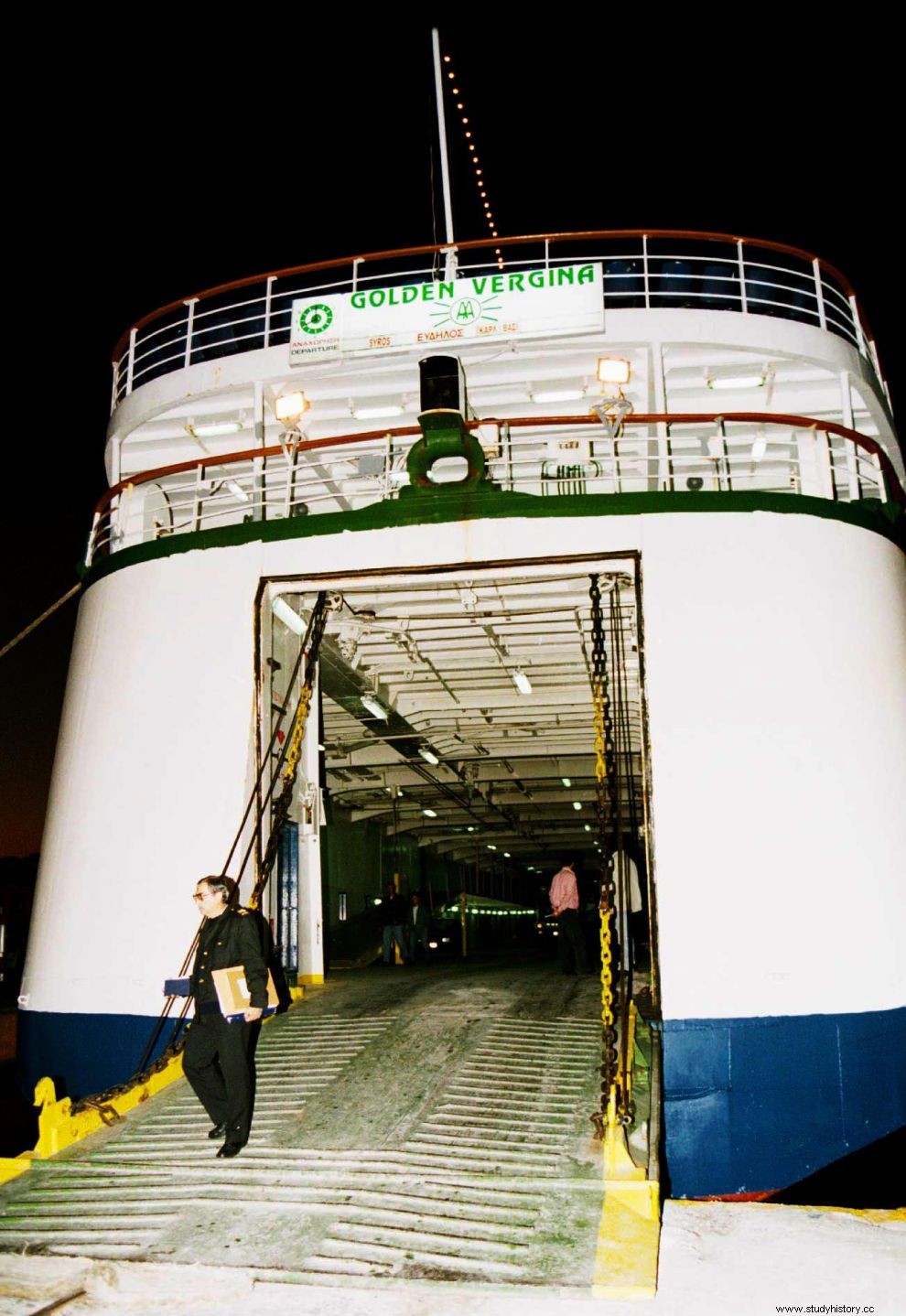
"So Parians and Naxiotes we got on the ship. It had about 7 Beaufort, but we started from Piraeus normally. An old ship but it seemed good to me. The wind was not blowing high and so it didn't shake much" remembers Tziotis. The first port, that of Paros, was 5 hours away. Throughout the voyage the weather remained bad, with the ship passing through a storm, but without any dramatic deterioration.
The majority of the passengers were in the lounges and other common areas of the ship. At 22:00, the first lights from the port of Paros were visible on the horizon, while the signal on the televisions was lost, causing discomfort to passengers trying to watch the football match between Panathinaikos and Hamburg for the Champions League groups.
Tziotis, who was traveling alone, without his family, had met two of his acquaintances from Naxos, Georgia Passou and Alexia Liakopoulou, and they were sitting together in the self-service restaurant area. "We had eaten and stayed there talking. Suddenly we felt a big jolt, like an 8-magnitude earthquake. We fell down. Tables, chairs, trays from the restaurant fell, injuring some people. There was panic".
It was 10:12 p.m. The "Express Samina", traveling at a speed of 18 knots, had hit the "Portes", two small islands just 2 miles off the port of Parikia, on her right side.
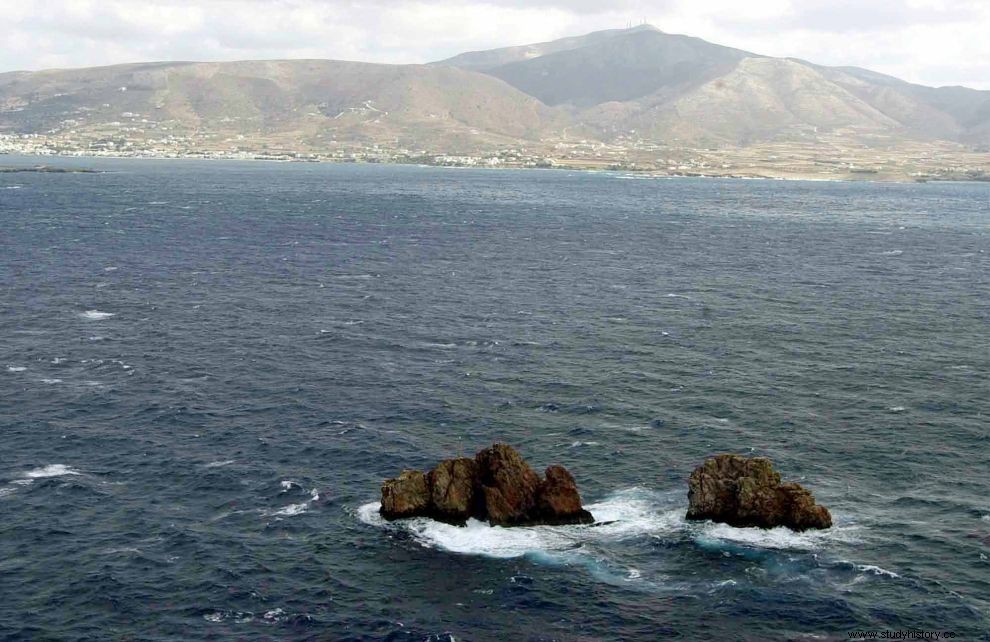
"When the boat hit the rocks I immediately understood that it had suffered a lot of damage. It wasn't just the jolt. It immediately started to smell very strongly, like when sheet metal is cut from a wheel. I was afraid it would catch fire", remembers Tziotis, who fell into the floor he could hear the voices of passengers running in every direction.
"The girls and I got up and moved out. There were some lockers that had life jackets in them and they had fallen from the crash. Everything was dark. Only the safety lights were on. I got life jackets and we went on deck and moved to the stern. We caught up and we caught the rail first. The people began to come out and scream. The weather had turned rough and the wave was lifting the steamer. It was knocking it down and with the blow it was heeling over."
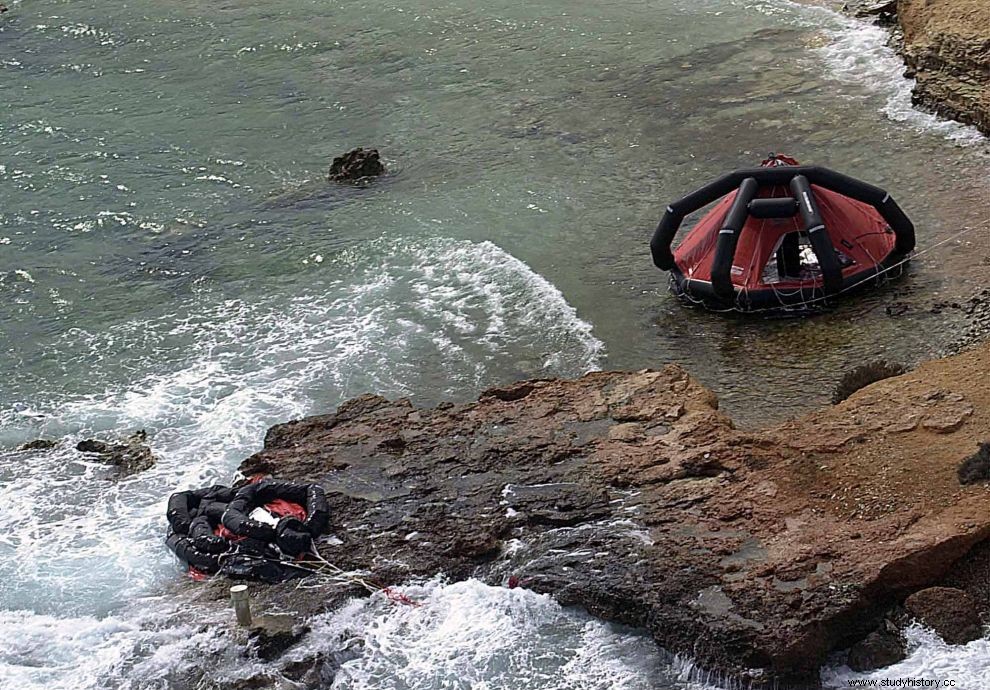
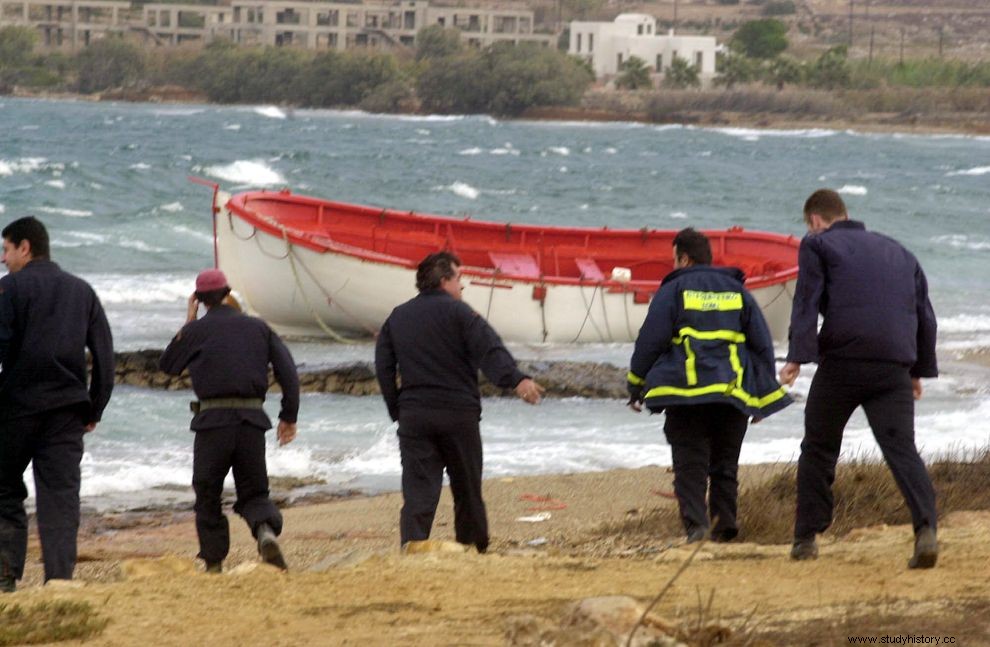
One of the women in the group, Alexia Liakopoulou, decided to leave for the upper deck. It was the last time they would see her. "Georgia Passou and I were left holding on to the stern. When I saw that the ship had tilted so much that the water reached the middle of the deck, I was afraid that it would make some sudden movement and take us down. I suggested to Georgia that we climb the handrail and jump on the lower deck where the trunks were. He replied that he would stay on the deck, says Stefanos Tziotis. In the meantime, more and more passengers were gathering"I remember that he had hugged each other to manage to stand up. You couldn't stand alone".
Tziotis climbed the railing and with one jump he found himself at the place where Samina's coffins were. "I untie a cable and throw the rope overboard. I jammed it on the roller and crawled to the side of the steamer, which was leaning. I remained there for a while hooked, until someone else saw me and tried to come and do the same. He pushed me and we both fell into the water. Perhaps I was the first to fall from the ship. On that side I certainly was the first."


She was now out to sea with the wind up to 8 Beaufort and the waves to rise blocking any visibility. "It's like walking into a dark apartment. You can't see anything. I didn't know where the ship was, I couldn't see the lights from Paros. I was in nowhere, with the wind raging and the waves coming in my face constantly cutting me off breathing". Not knowing the use of the life jacket he had on, he was trying to swim with one hand. "The life jacket was lifting me to the surface of the water and I thought it was going to topple over. So with one hand I was trying to hold it steady on my chest and I was trying to swim on my back. Normally, you can't swim, it's bulky. His philosophy, is to keep you vertically in the water".

As time passed, Tziotis realized that he had no ability to direct his body anywhere. It was a rush of waves. He had managed to briefly see the lights of Paros in the distance, while the first flares thrown by the crew lit up the sky. "I didn't expect to get anywhere. I just thought that someone would come because we were close to the island. I saw some lifebuoy lights and tried to get close. Suddenly, a boat came to me. The weather was bringing it towards me, I was trying to go too towards her. I hooked onto the ropes around it and tried to climb up. The life preserver made it very difficult for me to climb up. With a lot of effort they finally pulled me up, I also did a kick and found myself up".
There were about 20 people on the boat, most of the crew who had abandoned ship. Until that time they had not managed to locate the crank that would put the engine in front of them to leave for Paros, as a result of which they sailed unruly to the spot where Tziotis had been swimming for about 2 hours. "If they had been able to put the boat forward earlier, they would have gone. I was very lucky. I got into the boat, we looked for the crank but nothing. With a jerk that was made, it finally threw itself in front of us. I thought there was no way it was going forward. It started to one of the crew tries, nothing. He tries again. Impossible. He is kicked by another one who was more muscular, he starts with power and turns her and finally got ahead. So at 01:30 we set foot on the land of Paros".
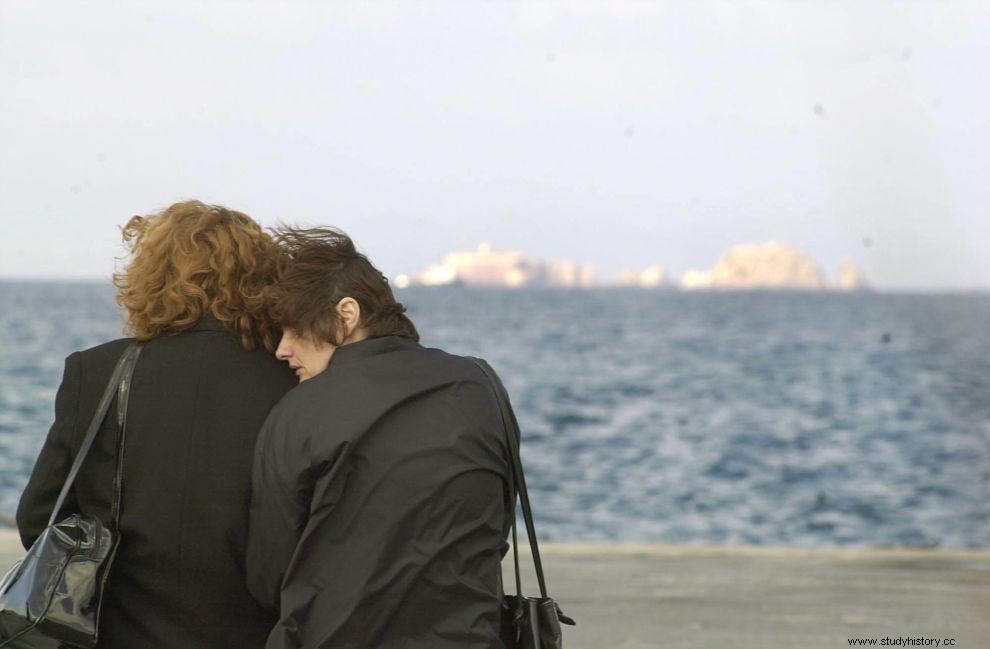
While on the boat, Stefanos Tziotis asked for a phone call to notify his pregnant wife in Naxos that she was fine. "I was afraid of what the TV would have shown. She was pregnant and I didn't want her to panic. One of the people gave me his phone that wasn't wet, I picked her up, I told her the boat sank, I'm fine and I'll pick her up again when I get there Paros".
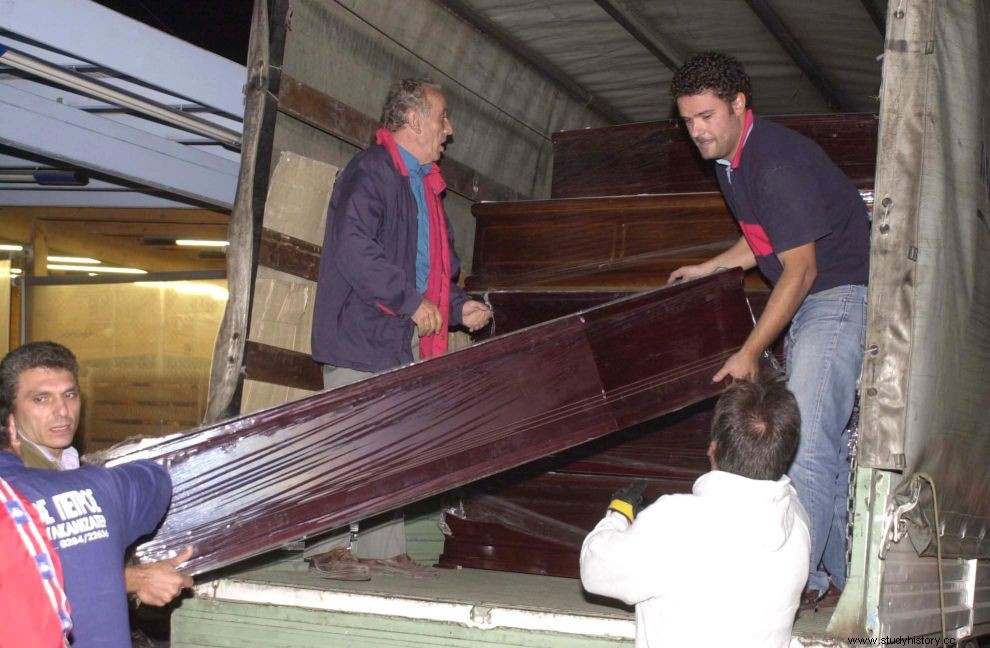
The surviving castaways were going to be examined at the island's Health Center. Shops were opened to give them clothes to change into, while chartered coaches would take them to hotels to sleep. "I saw people who had been washed up on the rocks of the island by the wave and were coming to the Health Center. What I remember most vividly, however, is the ship that the company chartered to bring coffins and the bodies of people I saw being pulled out of the sea" .
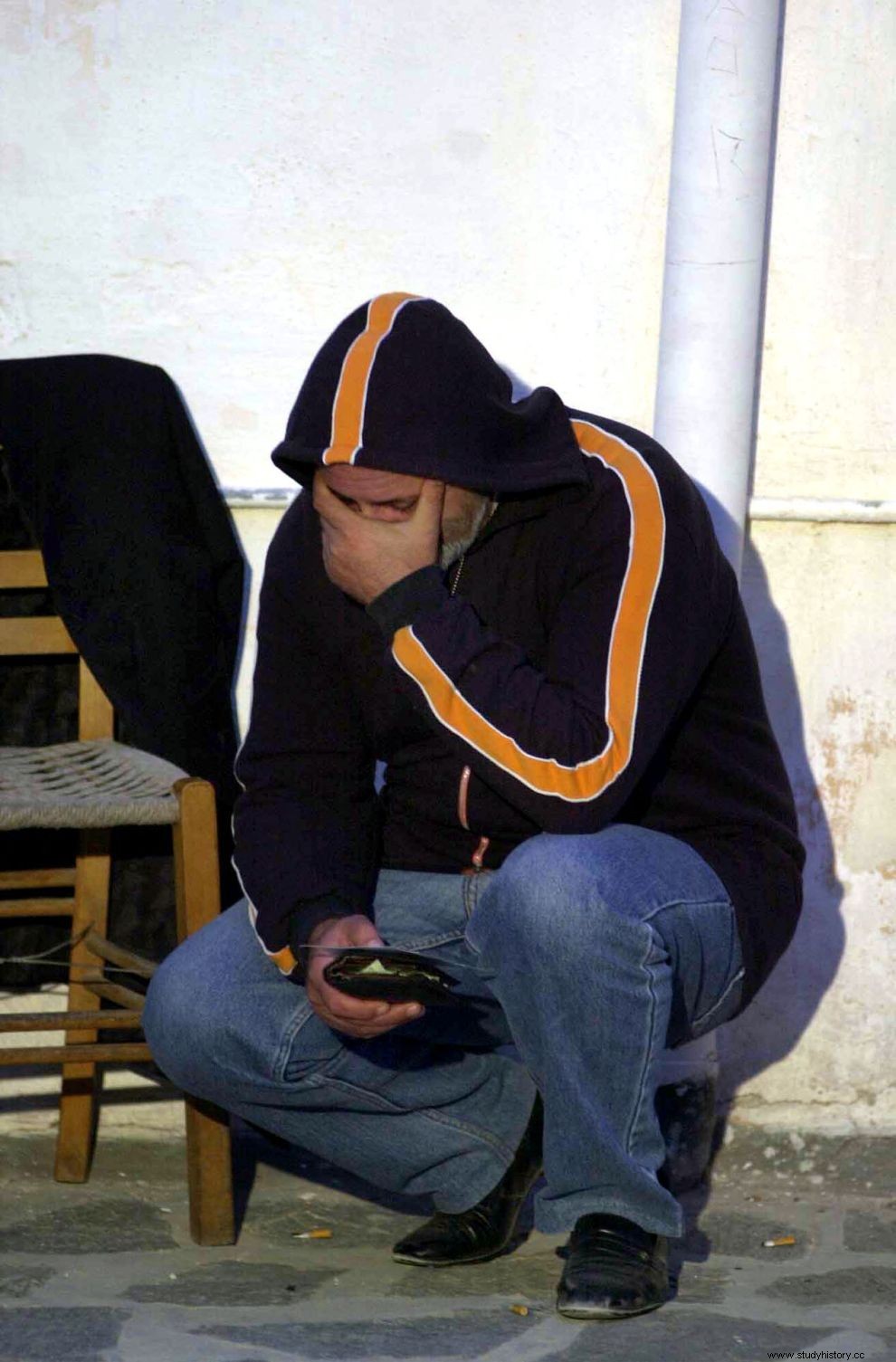
The next day, those who managed to survive were looking for their acquaintances. Georgia Passou, with whom they went out on deck together, survived as a wave threw her into the sea, however the third of her company, Alexia Liakopoulou, lost her life that night.
Stefanos Tziotis, now 61 years old, remembers among the people who lost their lives, a family with a small child. "I'll never forget that they were playing on deck before the ship hit. Then the father went to save the mother and they both drowned. Someone grabbed the child and he was saved."
For years, he could not sleep without a light on in the bedroom, as he remembered the moments of total darkness among the waves and felt again that someone was covering his mouth and nose. "I've since stopped going down to the garage before the boat docked. I was afraid that if something happened I wouldn't be able to leave. But what I tell people who tell me they're going to travel, is to pay attention to the crew members who are demonstrating lifesaving equipment We think we know how to use them, but it's not like that," says Tziotis.

From the experts' 12-month investigation, a series of errors and omissions emerged, such as sailing on autopilot despite adverse weather conditions, open watertight doors that should have been closed, not notifying the master of the breach in time, not λειτουργία σειρήνας έκτακτης ανάγκης και η απουσία καθοδήγησης από το πλήρωμα στους επιβάτες για την οργανωμένη εκκένωση του πλοίου. Ακόμη, προέκυψε πως πολλά σωσίβια δεν διέθεταν λαμπτήρες και σφυρίχτρες, ενώ επτά ημέρες πριν το ναυάγιο, ο Α’ μηχανικός Αναστάσιος Σορόκας είχε παραιτηθεί υποστηρίζοντας πως το πλοίο δεν ήταν αξιόπλοο αντιμετωπίζοντας σειρά προβλημάτων στις μηχανές και την καθέλκυση των λεμβών.
Το "Εξπρές Σάμινα" 15 μήνες πριν αποσυρθεί από τις θάλασσες -αφού στις 31 Δεκεμβρίου 2001 θα συμπλήρωνε 35 χρόνια ταξιδιών- κατέληξε στον βυθό του Αιγαίου, ανοικτά της Πάρου όπου βρίσκεται μέχρι σήμερα. Χρειάστηκαν μόλις 25 λεπτά από την ώρα της πρόσκρουσης για να βουλιάξει. Μαζί του, πήρε 81 ζωές επιβατών. Το ίδιο βράδυ, πέθανε ο υπολιμενάρχης Πάρου, Ανθυποπλοίαρχος Δημήτρης Μάλαμας, ο οποίος έπαθε έμφραγμα κατά τη διάρκεια του συντονισμού της επιχείρησης διάσωσης, ενώ δύο μήνες αργότερα, ο Παναγιώτης Σφηνιάς, διευθύνων σύμβουλος της πλοιοκτήτριας εταιρείας του "Σάμινα", βούτηξε στο κενό από τον έκτο όροφο του γραφείου του στην Ακτή Κονδύλη, δίνοντας τέλος στη ζωή του.
